Built by GMC Canada
The company was founded in 1918, integrating the local McLaughlin Motor Co. stock. based at Oshawa, Ontario and was historically one of the largest and most powerful corporations in Canada, the third largest at least until 1975. It was the number one provider of Automobiles inside Canada before the war. So the company was well-placed to shift for a military mass production, and the case erupted with ww2 when a specification came from Great Britain, open to all commonwealth Nations, for a light reconnaissance car. In 1941, the company procured itself the Humber LRC Mark III blueprints and started working on an adaptated design.Otter light AC at Bridgehead 2011, Photo by Alf Van Beem.
The GMC Otter Design
The Otter was obviously not a simple carbon copy of the Humber LRC. Although the latter had a 4x4 drive (from the Mk.III), a sloped armor body, and a small turret, the Otter had a stubby nose with a more capable engine in it, a sloped roof, and a very characteristic "tail". The hull section was at the widest just behind the side doors of the driving compartment, before the fighting compartment. It had a better ground clearance, a shorter wheelbase, and was 33 cm higher. Protection was 12 mm on the front, and 8 mm on the sides. The Otter was based on the Chevrolet C15 Canadian Military Pattern truck chassis, with GM parts. Only the armament was provided by Great Britain, consisting of a Bren 0.3 mm LMG, located in the small dome-like turret, and a Boys cal. 0.5 AT rifle, fired from the co-driver seat. The Otter overall weight was 4.44 tons, much higher than the 3.40 tons of the Humber Mark III, and this reduced its top speed and agility, although its off-road capabilities and overall performances were still acceptable.Production & variants
The prototype was ready in early 1941, and was accepted as the Car, Light Reconnaissance, Canadian GM Mark I. Production started at GMC Canada in mid-1942. It lasted until 1945, when 1761 machines had been delivered. Of this mass, only 1000 found their way inside operational units, the rest was kept in Canada for various duties and training. It is also known as the "Mark I" by default. There was no known variant other than field conversions like the RAF 20 mm armed versions.The Otter Light Armoured Car in action
The Otter was one of the main reconnaissance armoured cars of the Canadian armoured units during ww2, soldiering in Sicily, Italy, Normandy and the low countries. It was also in service with the British RAF and some armoured regiments. British vehicles were also deployed as AA protections with a 20 mm oerlikon mounted in place of the turret. After the war, Surplus were sold to the Jordanian Army, some of which apparently ended in the hands of the palestinian Arab Liberation Army and the Arab legion whioch saw extensive combat in 1948. Some were recaptured and possibly saw briefly service with Israeli militias. The Dutch Army also bought the Otter in substantial numbers, which saw combat during the Indonesian Revolution of 1945-1949. Surviving vehicles could be seen now at the Karl Smith Collection in Tooele, Utah and at the RAF Regiment Museum, Honington.Links about the Otter AC
The Otter on WikipediaVideo at KTR Achterhoek 2012
Video from the ASPHM
Otter in Italian service
Otter light AC specifications | |
| Dimensions | 14.9 x 7.1 x 8.0 ft (4.50 x 2.16 x 2.44 m) |
| Total weight, battle ready | 4.44 tons |
| Crew | 3 (driver, gunner, AT gunner/radio) |
| Propulsion | GMC 6 cyl. gas. 106 hp (79 kW) 24.1 hp/tonne |
| Suspension | 4 x 4 wheel, leaf spring |
| Speed (road) | 47 mph (75 km/h) |
| Range | ? mi (? km) |
| Armament | 0.55 in (13.97 mm) Boys Antitank rifle, 0.303 in (7.7 mm) Bren MG. |
| Armor | Maximum 12 mm (0.45 in) |
| Total production | Approx. 1,761 1942-45. |
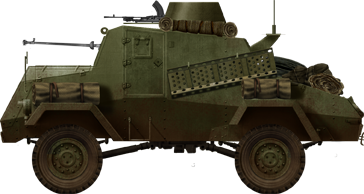
Otter Mk.I, early production, Canada, 1941.
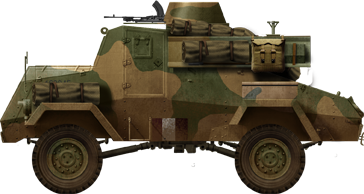
Otter Mk.I, British 23th Armoured Brigade, Volturno area, Southern Italy, October 1943. Scr: C. de Diego
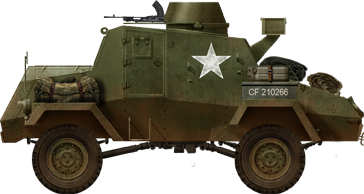
Otter Mk.I from the 4th Canadian Armoured Division, 2nd Corps, NW France, august 1944. Scr: C. de Diego
Otter LRC Gallery

Otter en route to Grazzanise, October 1943, IWM.

Former (Jordanian or British RAF?) Vehicle captured by the Haganah from the Arab Liberation Army in 1948.
Amersfoort Cavalry museum

Men of the armoured detachment of No. 2771 Field Squadron, RAF Regiment, service their Otter light reconnaissance car and weapons at Prkos airfield, Yugoslavia. - Collections of the Imperial War Museums

GMC AC 1948

GMC AC 1948 in Irsaeli service
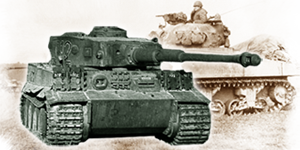
WW2 Tanks




























WW2 tanks posters
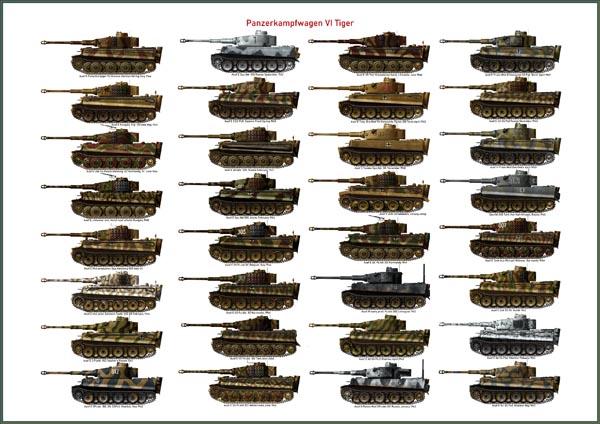
All Tiger tanks liveries.
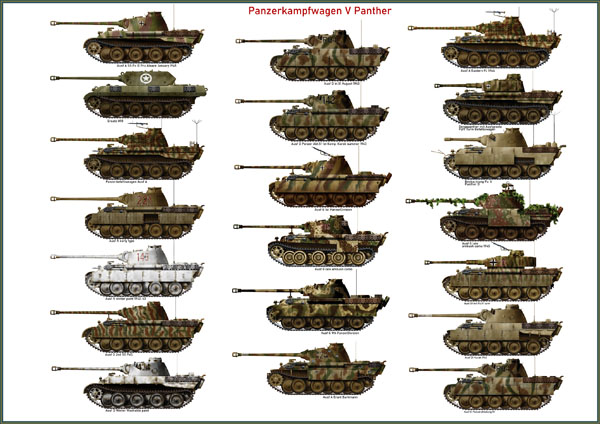
Panther liveries and variants
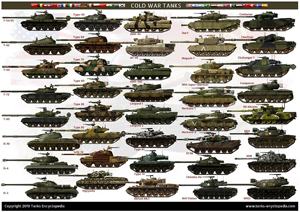
WW2 Armour - All tanks
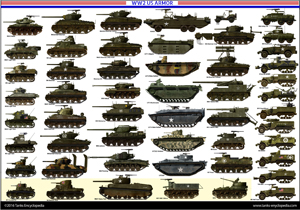










Tanks aces and single tanks series

Find more there

Museums, Movies, Books & Games
The Tanks and Armor in pop culture
Tanks and armored vehicles in general are only really grasped when seen first person: The mass, the scale, it's all there. Explore also the way tanks were covered in the movie industry, in books and in video games.Movies:
Best tanks movie on warhistoryonline.com
On imdb.com
On bestsimilar.com/
miltours.com
liveabout.com/
watchmojo.com
Video Games:
pcgamesn.com
historyhit.com
levvvel.com
vg247.com/best-tank-games
mmobomb.com/
alienwarearena.com

